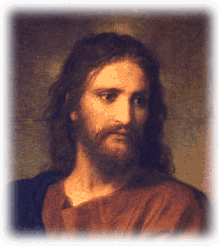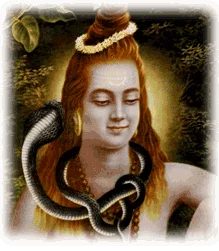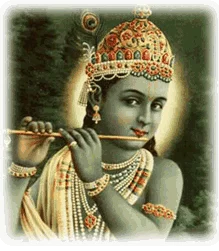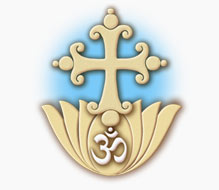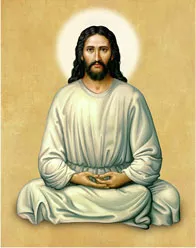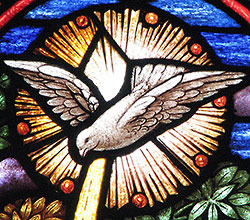
Twofold restoration
The Sacrament of Confirmation, or Chrismation, follows Baptism as its completion. Thus the spiritual birth of the Christian initiate is in two stages, for as Jesus told Nicodemus: “Verily, verily, I say unto thee, Except a man be born of water and of the Spirit, he cannot enter into the kingdom of God. That which is born of the flesh is flesh; and that which is born of the Spirit is spirit.” (John 3:5, 6). The great Origen used to refer to those who had not been reborn through the Sacraments as “bodies,” meaning that they functioned only as instinctual animals, dormant in their higher minds and spirits.
When Adam and Eve transgressed in Paradise, they “died” in their higher levels of being and had to be clothed again in physical bodies (“skins”) and returned to the earth from which they had come (Genesis 3:21, 23. See Robe of Light). Before their fall, they had lived in the spirit and had literally been clothed with the Light of the Holy Spirit, but after they fell in their consciousness, that spiritual clothing was withdrawn “and the eyes of them both were opened, and they knew that they were naked” (Genesis 3:7). The purpose of Jesus’ advent in this world was to restore man to the condition he possessed in Paradise so he could continue his upward evolution. That is why he told the wise thief: “To day shalt thou be with me in paradise” (Luke 23:43). Baptism and Confirmation effect this return to the state of original humanity, again clothing us “with light as with a garment” like him in whose image we have been made (Psalms 104:2; Genesis 1:27).
Jesus, our example
As our example, Jesus was himself baptized by the holy prophet and forerunner John. “And Jesus, when he was baptized, went up straightway out of the water: and, lo, the heavens were opened unto him, and he saw the Spirit of God descending like a dove, and lighting upon him: and lo a voice from heaven, saying, This is my beloved Son, in whom I am well pleased” (Matthew 3:16, 17). He intended the same for us, and instituted the Sacraments of Baptism and Confirmation. The two are so inextricably bound up that they are really only two halves of a single thing: the New Birth of the spirit.
Pentecost
The first reception of the Holy Spirit by those who believed in Jesus as the Messiah was on the day of Pentecost, which was also the birth day of the Church. At the time of his ascension Jesus told the apostles to remain in Jerusalem, “for John truly baptized with water; but ye shall be baptized with the Holy Ghost not many days hence” (Acts 1:5). Accordingly, they returned to Jerusalem and assembled in a room in the house of John Mark, the future Evangelist, and waited for the promised descent of the Holy Spirit. “And when the day of Pentecost was fully come, they were all with one accord in one place. And suddenly there came a sound from heaven as of a rushing mighty wind, and it filled all the house where they were sitting. And there appeared unto them cloven tongues like as of fire, and it sat upon each of them. And they were all filled with the Holy Ghost” (Acts 2:1-3). From that time onward the Holy Spirit was imparted by the laying on of hands of a bishop and anointing with Chrism, which is why Saint Paul wrote to the Christians at Ephesus: “After that ye believed, ye were sealed with that holy Spirit of promise” (Ephesians 1:13). After some time, in the Eastern Church priests anointed the newly-baptized with Holy Chrism (blessed by a bishop) for the reception of the Holy Spirit, and Confirmation began to be known as Chrismation.
Confirmation
The purpose of Baptism is purification, correction, and awakening. The purpose of Confirmation is the imparting of the Life of Christ through the indwelling of the Holy Spirit, “the Spirit of Christ” (Romans 8:9; I Peter 1:11). When the Archangel Gabriel appeared to the Virgin Mary in Nazareth he told her: “The Holy Ghost shall come upon thee, and the power of the Highest shall overshadow thee: therefore also that holy thing which shall be born of thee shall be called the Son of God” (Luke 1:35). It is intended to be the same for every initiate of Christ: the Holy Spirit working within to enable us to conceive and bring forth Christ, “Christ in you, the hope of glory” (Colossians 1:26, 27). Every disciple of the Master Jesus is intended to one day truthfully say: “For to me to live is Christ” (Philippians 1:21). “Not I, but Christ liveth in me: and the life which I now live in the flesh I live by the faith of the Son of God” (Galatians 2:20). How different is this holy ideal from the usual idea that Christians are to be no more than well-stabled, well-behaved animals, obedient to church authorities, believing all they are told by those authorities, and eventually rewarded with everlasting embodiment in a heaven that is little more than the present earth without its defects.
To be baptized “with the Holy Ghost, and with fire” (Matthew 7:11) is the final step in the New Birth into the Christ Life which is to culminate in our attaining Christhood.
The Spirit of Truth
Part of that attainment is the unfolding of “the mind of Christ” (I Corinthians 2:16) within us, which is both illumined intelligence and spiritual intuition–in other words: Gnosis (Jnana). Jesus told the disciples that the Holy Spirit “shall teach you all things” (John 14:26), that the Holy Spirit, “the Spirit of Truth…will guide you into all truth… and will shew you things to come” (John 16:13).
It is simply impossible to describe all that the Holy Spirit will do in the life, mind and heart of the disciple: “But as it is written, Eye hath not seen, nor ear heard, neither have entered into the heart of man, the things which God hath prepared for them that love him. But God hath revealed them unto us by his Spirit: for the Spirit searcheth all things, yea, the deep things of God. For what man knoweth the things of a man, save the spirit of man which is in him? even so the things of God knoweth no man, but the Spirit of God. Now we have received, not the spirit of the world, but the spirit which is of God; that we might know the things that are freely given to us of God. Which things also we speak, not in the words which man’s wisdom teacheth, but which the Holy Ghost teacheth; comparing spiritual things with spiritual” (I Corinthians 2:9-13).
Yogic Confirmation
In the Western Christian tradition, although a priest may baptize, only a bishop may confer the Sacrament of Confirmation.
Invocation and blessing
As with all Sacraments, Confirmation begins with the invocation of the Trinity:
In the name of the Father and of the Son and of the Holy Spirit. Amen.
Immediately the bishop blesses those to be confirmed, saying:
May the ✠ blessing of the Holy Spirit come down upon thee, and may the power of the Most High preserve thee in all thy ways. Amen.
It is this effect of spiritual preservation (perseverance) that gives the Sacrament its name, Confirmation.
Veni Creator
In the ninth century Blessed Rabanus Maurus, an abbot and the archbishop of Mainz, Germany, authored the renowned hymn Veni Creator Spiritus that is sung on Pentecost and at all ordinations of deacons, priests, and bishops in the Western Christian tradition. Bishops Wedgwood and Leadbeater preferred the following translation which is then sung:
Come, Thou Creator Spirit blest
And in our souls take up thy rest;
Come with thy grace and heavenly aid,
To fill the hearts which Thou hast made.Great Paraclete, to thee we cry,
O highest gift of God most high;
O living fount, O fire, O love
And sweet anointing from above.Thou in thy sevenfold gift art known;
Thee, finger of God’s hand, we own,
The promise of the Father, Thou
Who dost the tongue with power endow.Kindle our senses from above
And make our hearts o’erflow with love;
With patience firm and virtue high
The weakness of our flesh supply.Far let us drive our tempting foe
And thine abiding peace bestow;
So shall we not, with thee for guide,
Turn from the path of life aside.O may thy grace on us bestow
The Father and the Son to know
And thee, through endless times confessed,
Of Both eternal Spirit blest.All glory while the ages run
Be to the Father and the Son,
Who gave us life; the same to thee,
O Holy Spirit eternally. Amen.
Bishop Leadbeater wrote this regarding the hymn and its use: “It has become the accepted form for the appeal to God the Holy Ghost on all occasions when we ask for a special outpouring of his mighty power, and its effect is very remarkable. As it is being sung, the whole church is gradually filled with a wonderful red glow, a kind of luminous fiery mist…. This celestial fire grows stronger and stronger as the hymn proceeds, and eventually a mighty vortex of it forms itself above the head of the Bishop, and pours itself down through him shortly afterwards at the critical moment of the imposition of his hand. As soon as the hymn is finished, the Bishop immediately proceeds with the actual Confirmation.”
The Confirmation
The bishop is seated. Each person to be confirmed comes and kneels before the bishop, placing his hands together palm-to-palm. The purpose of this is to put the person to be confirmed “in circuit.” By the joining of his hands, a person gathers in any scattered auric energy and seals his aura.
The bishop holds the candidate’s hands with his left hand, takes some Chrism upon his right thumb and, placing his right hand upon the head of the candidate, says:
Receive the Holy Spirit for the sweet savor of a godly life.
“Ye are the temple of God, and the Spirit of God dwelleth in you” (I Corinthians 3:16). In this exact moment the Holy Spirit pours into the crown chakra (brahmarandhra) of the person and fills his entire being on all levels. “God is in you of a truth” (I Corinthians 14:25).
Just as Baptism leaves an indelible effect or mark on the person, so does Confirmation. From this moment on he will be a living temple of the Holy Spirit–at least potentially, for everything depends ultimately on the will of the individual person. Even God does not trespass on the territory of human free will, although a host of ignorant and evil humans and discarnate intelligences are eager to do so. Yet they cannot utterly wrest the will power from anyone, and once a negatively-turned will is turned back to positive, no evil force has any lasting power over him.
As said at the beginning of this chapter, Genesis tells us that Adam and Eve had no clothing, but did not know it because they were surrounded by an aura of light and did not even see their bodies, though they were aware of them. This garment of light was the distinctive characteristic of embodiment in the astral world (just above this material world) known as Paradise. When Adam and Eve broke faith with God by disobedience, they underwent a spiritual death and the Paradise body of light fell away from them and they saw their astral bodies that were in the form of the last physical bodies they had inhabited. Though those bodies were of the highest evolved form on the earth plane, they were animal bodies and the sight of them made the two transgressors ashamed. Having died to Paradise, they sank back into material existence and the creator-mothers, the Elohim, specially created bodies for them that were halfway between earth and Paradise: the human form we all now inhabit. (Again: see Robe of Light.)
What is relevant to us here is the fact that those who are confirmed are given a light body to which they can ascend to Paradise for further evolution at the time of earthly death. Thus through Baptism and Confirmation they are restored to normal humanity, to the condition of Paradise. From this moment onward they live on earth as strangers and pilgrims (Hebrews 11:13; I Peter 2:11), no longer just destined for higher life, but empowered to lay hold on it even while on the earth.
Sign of the Cross
Next the bishop makes the sign of the Cross with the Chrism on the forehead of the person–just as was done by the priest when receiving him into the fellowship of the Church in Baptism–as he says:
Whereunto I do ✠ sign thee with the sign of the Cross, and I confirm thee with the Chrism of salvation.
Then he makes the sign of the cross three times over the head of the newly-confirmed, saying:
In the name of the ✠ Father, and of the ✠ Son, and of the Holy ✠ Spirit. Amen.
These crosses greatly affect the entire sahasrara chakra (thousand-petalled lotus) of the person and prepare the way for its development through meditation and participation in the Mass and other Sacraments.
Once more the bishop lays his hand upon the head of the newly-confirmed and says:
Therefore go thou forth, my brother, in the name of the Lord, for in his strength thou canst do all things.
Now is fulfilled the statement of Jesus in Revelation: “Behold, I have set before thee an open door” (Revelation 3:8). For what has just been done to each confirmand has opened the door in heaven through which Saint John the Apostle ascended into the world of his visions (Revelation 4:1). And in that world the initiate of Christ can indeed do all things.
Peace
The conferring of Baptism and Confirmation are easily done, but to attain their purpose is not a breeze-through. It can entail very real struggle, but the bishop has assured them they can do it all. It is common to speak of the blows of life, so in conclusion the bishop touches the person lightly on the left cheek saying:
Peace be with thee.
in the hope that his light touch may be the hardest blow they will have to meet. It is both a blessing and an encouragement.
Exhortation
When all have been confirmed, the bishop says to them:
My brothers, now have you received the gift of the Holy Spirit; see to it that your bodies are ever pure and clean, as befits the temple of the most high God and the channel of so great a power; and understand that as you keep that channel open by a useful life spent in the service of others, so will his life that is with you shine forth with ever greater and greater glory.
This exhortation outlines three great truths: 1) Purity is an indispensable factor of authentic spiritual life. 2) In this world where selfishness is considered by many a virtue, we need to be continually reminded of that second greatest commandment involving us with our fellowmen. 3) The Life of God is our life, intended to “shine forth with ever greater and greater glory.”
Thanksgiving and blessing
The bishop rises and faces towards the altar and intones alternately with those present:
B: ✠ Our help is in the name of the Lord.
R: Who hath made heaven and earth.
B: Blessed are the pure in heart.
R: For they shall see God.
B: Trust ye in the Lord for ever.
R: For he is our Rock of Ages.
B: The Lord be with you.
R: And with thy spirit.
B: Let us pray.
He turns and extends his hands toward the newly-confirmed, and prays:
O Lord Jesus Christ, who didst give the Holy Spirit to thine apostles, and didst ordain that by them and their successors she should be given to the rest of the faithful, we render thee hearty thanks for this thine inestimable benefit now bestowed upon us.
We offer unto thee the life which thou today hast blessed, that he may so bear himself, true and faithful in thy service, that he may be found worthy hereafter to stand before thee in the ranks of the Church triumphant, O thou great King of Glory, to whom be praise and adoration from men and from the angel host. Amen.
The he blesses them, saying:
God the ✠ Father, God the ✠ Son, God the Holy ✠ Spirit, bless, preserve and sanctify you; the Lord in his lovingkindness look down upon you and be gracious unto you; the Lord lift up the light of his Countenance upon you and give you his peace, now and for evermore. Amen.
The initiation into discipleship of the Master Jesus, and through him discipleship of Christ-God, is thus complete. “Beloved, now are we the sons of God, and it doth not yet appear what we shall be: but we know that, when he shall appear, we shall be like him; for we shall see him as he is.” (I John 3:2).
Next in Yoga of the Sacraments: The Mass, The Yoga of Union

